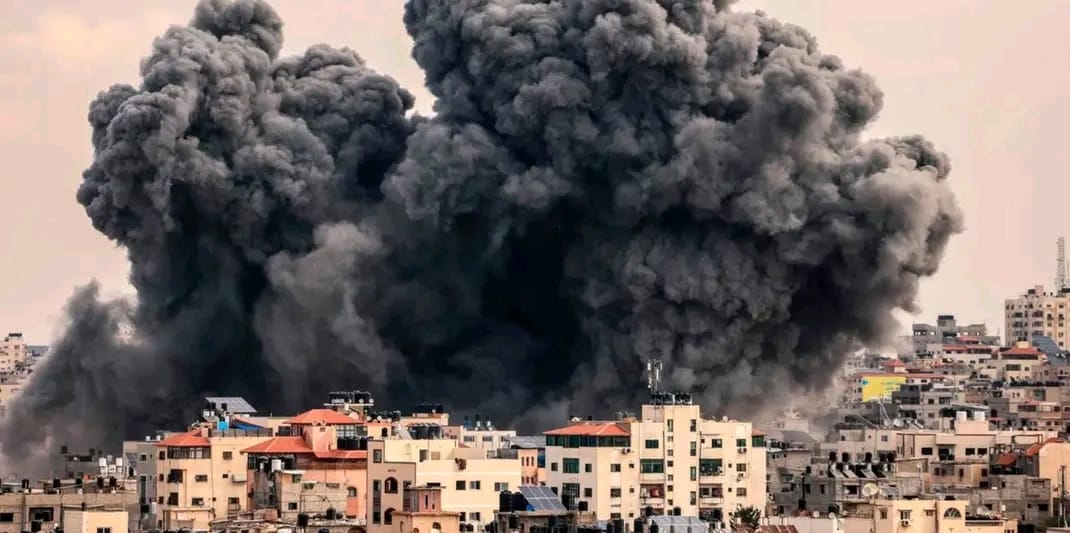
Israel and Palestine: Seeking a Path to Peace Amidst the Gaza Conflict
By Peter Idowu Jiya
The Israel-Palestine conflict is a long-standing and deeply rooted dispute that has resulted in numerous wars and endless suffering for both sides. The Gaza War, which has seen several escalations in recent years, is a tragic reminder of the urgent need for a peaceful resolution.
From the historical context, the Israel-Palestine conflict dates back to the late 19th century when Jewish immigrants began settling in historic Palestine, then part of the Ottoman Empire. This led to tensions with the Arab population, culminating in the United Nations’ 1947 decision to partition Palestine into Jewish and Arab states, which was met with resistance.
Recent years have witnessed multiple escalations of violence between Israel and Hamas, the group controlling the Gaza Strip. These conflicts have caused significant loss of life and have drawn international attention. Before the present conflict, the last major one occurred in May 2021, lasting for 11 days and resulting in hundreds of casualties and extensive damage. This year, the conflict started on the 7 October, where it was reported by The New York Times that militants from Hamas, a Palestinian political and military organization and other Palestinian groups, launched its biggest assault in years across the Gaza–Israel barrier into southern Israel, as well as firing rockets into Israel and within hours, Israeli fighter jets began airstrikes on targets inside Gaza.
The conflict seems to have gained momentum even way beyond the last one as it has plunged into 11th day, yet, with the two parties refusing to ceasefire.
It is partinent to note that if this conflict must come to and end, the way forwards bellow must be prioritized.
1. Dialogue and Negotiations: A peaceful resolution can only be achieved through sincere and sustained dialogue. Both Israel and Palestine should commit to direct negotiations without preconditions. International mediators, such as the United Nations, the United States, or the European Union, should facilitate and support these talks.
2. Two-State Solution: The two-state solution remains a viable option, where Israel and Palestine coexist as independent and sovereign states. Borders, the status of Jerusalem, and the rights of refugees must be addressed in any final settlement.
3. Humanitarian Aid and Reconstruction: The international community should support humanitarian efforts and the reconstruction of Gaza. Providing aid to those affected by the conflict and rebuilding essential infrastructure can help alleviate the suffering of civilians.
4. Ceasefire Agreements: Both parties must adhere to and uphold ceasefire agreements to prevent further loss of life. A long-term ceasefire could create a more conducive environment for negotiations.
5. Grassroots Initiatives: Civil society, including NGOs, grassroots organizations, and people-to-people initiatives, play a crucial role in promoting peace and fostering mutual understanding between Israelis and Palestinians. These efforts should be encouraged and supported.
6. International Oversight: An international body with authority and legitimacy could help oversee the implementation of any peace agreement and ensure compliance by both sides.
Conclusively, the Israel-Palestine conflict is complex and deeply ingrained in history, making it a formidable challenge to resolve. However, it is essential that all parties involved prioritize peace over conflict. The status quo of violence and suffering benefits no one. A lasting solution can only be achieved through diplomacy, empathy, and compromise. The way forward involves dialogue, negotiations, humanitarian aid, and the support of grassroots initiatives. Only by working together can Israelis and Palestinians hope to break the cycle of violence and build a more peaceful and prosperous future for all.






